Treasury Clearing Documentation Training Seminar
Join SIFMA and Cleary Gottlieb in New York City for a half-day deep dive technical training seminar to equip financial…

5:00pm – 5:30pm
Please join the SII Board of Trustees and all Year One participants for an orientation at Houston Hall.
5:30pm – 7:30pm
Join fellow participants and the SII Board of Trustees at the Penn Museum for a welcome reception to kick off Institute Week. The museum exhibits will be open for participants. Registration will take place as you enter the reception and will remain open for the duration of the reception.
The Penn Museum is located at 3260 South Street at the corner of 33rd Street and Spruce/South Street. Buses will only be provided for those staying at the Philadelphia Marriott Downtown and the Homewood Suites.
7:15am – 8:15am
Breakfast will be served at all SII hotel properties.
8:45am – 10:15am
‘Most companies are simply not designed to survive. They become successful on the basis of one big idea or breakthrough product,’ says CEO Mike Walsh of Tomorrow, a global consultancy that helps design 21st century businesses. ‘The companies that will thrive in the near future are the ones not only embracing change but breaking the rules.’
Companies built to survive the future are no accident. They are a result of deliberate business design decisions smart leaders are making today. In his ongoing research on the world’s most innovative companies, Mike has organized these decisions into seven strategic priorities – that he will explore with audiences as a roadmap for their own reinvention.
In this keynote, Walsh will outline the mega-trends shaping the future of business and consumer behaviour, and the lessons learned from successful Fortune 500 companies on leveraging disruptive innovation, adopting a data-driven mindset and leading change through digital transformation.
Sponsored by Fidelity Investments
Mike Walsh

10:35am – 12:05pm
The critical thinking sessions are engaging and interactive, focusing on common systematic biases that afflict even the best decision makers. A variety of decision-making biases will be illustrated in the context of day-to-day judgments that we make in both our professional and personal lives. Through a series of examples and case studies specific decision failures are identified and analyzed. The implications of these decision traps are examined, and recommendations on how to improve our decision skills are offered.
Learning Objectives:
Roch Parayre

12:30pm – 1:15pm
Using a real-world case, this informal lunch session will discuss critical barriers to strategic execution, and what attendees themselves can do.
Jim Austin

How do digital technologies change the landscape for financial services? How do they interact with demographic trends? This session will provide examples as to how the financial services landscape will change as a result.
In the U.S. women represent 51% of the population, and 25 years from now people of color will comprise the majority of our population. Yet, diverse asset managers are responsible for investing less than 2% of all assets under management in the United States. This session discusses the impact of diverse managers on the securities industry and our country, and how advocates educate lawmakers to ensure access to institutional capital is increasingly equitable.
Rosie von Lila

1:30pm – 3:00pm
CFP® Eligible
This session will investigate why healthcare spending always goes up, what are the drivers, and what can be done about it.
Learning Objectives:
• Distinguish the supply and demand side drivers of healthcare spending
• Distinguish the price and volume drivers of healthcare spending
• Investigate whether US healthcare costs rise faster than the rest of the world
• Discuss what realistically can be done to control spending (without the political rhetoric)
Lawton Robert Burns

CFP®, CIMA®, CPWA®, CIMC®, and RMA℠ Eligible
Ideal for: General audience, especially operations, technology, and finance backgrounds, as well as sales and sales managers with clients entering retirement.
Social Security and Defined Benefit plans, both of which traditionally replaced a large share of pre-retirement income for life, are in trouble. As a result, more responsibility has been shifting to individual Americans to save, plan, and invest for their own retirements. Unfortunately, just as the people who control a major amount of America’s wealth are aging and their financial needs are changing, many find themselves ill-prepared to manage their money for lifetime income. Professor Mitchell will discuss these Retirement Challenges in the context of the new global demographic and innovations in capital markets.
Learning Objectives:
Olivia Mitchell

CIMA®, CPWA®, CIMC®, and RMA℠ Eligible
American society is transforming. It’s aging. And with aging, we accumulate more and more wealth. In time, we need that wealth for our well-being, pleasure, and legacy. With aging, we’re also more likely to experience cognitive impairments. Persons with cognitive impairment need care, but there are fewer and fewer people available to care for them, especially the free labor of close by family. Persons with cognitive impairment are at heightened risk to make errors in financial management or be victims of financial fraud or abuse. Together, these facts distill a powerful brew of challenges for older adults, their families, medicine and the banking and financial services industries. This course will overview the common causes of cognitive complaints and cognitive impairment and the latest initiatives to improve the diagnosis and care of these disorders, and to address fraud and abuse. Particular attention will be paid to issues at the intersections of cognitive health and wealth. These include understanding what are the causes of cognitive problems, and how they impact of financial capacity. A smart firm will strive to practice “whealthcare” (learn more at www.whealthcare.org). The lecturer will examine how a firm might achieve this through staff training, effective communication with clients and their families (especially in light of FINRA rule 4512), and deploying novel technologies to monitor and detect changes in financial capacity, and as well, fraud and abuse. The class will have a look into the future of the monitored brain. Attendees will leave inspired to make changes in the ways they conduct business so that they can better serve the health and wealth of the older clients and their families.
Jason Karlawish

3:20pm – 4:50pm
CIMA®, CPWA®, CIMC®, and RMA℠ Eligible
Everyone agrees that people, firms, and the financial industry in general needs good ethics. But this only prompts the question. What does it mean to be ethical? Unfortunately, most of the answers we hear on this question are talking about something else. In this session, Professor Peter Conti-Brown takes participants on a tour of unlearning by showing how ethical decision-making differs from marketing, law, compliance, and morality. Instead, ethical decision-making is about values and business strategy, not peripheral to the day-to-day, but central to it. Using examples from the financial services and other industries, Conti-Brown challenges participants to think hard about the ongoing challenge not only to identify unethical behavior but the more difficult task of building ethical individuals, teams, and firms.
Peter Conti-Brown
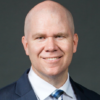
5:00pm – 6:15pm
Join fellow participants and the SII Board of Trustees at Houston Hall for an all years networking reception.
7:15am – 8:15am
Breakfast will be served at all SII hotel properties.
8:45am – 12:05pm
CFP®, CIMA®, CPWA®, CIMC®, and RMA℠ Eligible
Professor Tiffany reviews the historical evolution of the American economy, with an initial emphasis on the foundations for future growth created at the beginning of the nation and then the emergence of the large firm at the end of the 19th century. That event shaped the American political economy over the next century as the “Schumpeterian” scenario of entrepreneurs leveraging new technologies profoundly transformed America and laid the groundwork for global economic dominance. Professor Tiffany will then bring the discussion up to the present time, by first explicating how a second “Schumpeterian era of creative destruction” created the “new economy” of technology-dominated business in the latter decades of the 20th Century, and then how the opening of globalization has now threatened that dominance; we will pay particular attention to the growing concentration of business in the hands of a relatively few firms and the current calls for a resuscitation of the antitrust laws. We will conclude by considering such issues as “making America great again” in the profoundly changed 21st Century global economy in which China has risen so dramatically. The central issue will be the sustainability of US economic dominance going forward.
Learning Objectives:
Paul Tiffany

12:30pm – 1:15pm
How do we attract and retain the best and brightest while building awareness for the sector and our business? The war on talent has evolved and so must we. According to the Bureau of Labor Statistics, jobs for financial analysts are expected to grow at a rate of 30% until the year 2024. Moreover, Millennials are opting for jobs that promise purposeful, rewarding work. Radical transformation for the sector means finding new ways to invigorate and engage our communities and build an inclusive workforce. It means ensuring public understanding of the essential role of the capital markets in building wealth and driving opportunity. Participants in this session will gain: insights into the latest theories about the benefits of corporate community involvement and skills-based volunteerism; practical, turnkey community strategies that build a pipeline for top talent, a diverse workforce, and new customers; and access to community engagement tools that enhance financial education, increase reputational capital, improve D&I efforts, fulfill CRA requirements, and boost employee morale.
Melanie Mortimer, Lisa Kidd Hunt

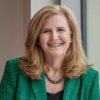
Our informational age is increasingly intermediated by smart phones and social media, divvying up our attention span in seconds, rather than minutes. In this lunch discussion, Prof Conti-Brown talks about the power of reading books—physical books, not audio books or Kindles or online summaries. He also talks about what he’s reading and what happens to our brains when we de-digitize, dig in, and let our minds become absorbed for a few hours of reading.
Peter Conti-Brown

1:30pm – 3:00pm
CIMA®, CPWA®, CIMC®, and RMA℠ Eligible
In this lecture, noted security expert Tom Patterson leverages his decades fighting cyber criminals and foreign spies to take us on an insider’s tour through today’s cyber threats against the financial industry, giving a face to our enemies, and laying bare their sources and methods. In this highly interactive session, Tom tells inside stories of current real world attacks you’ve read about, dispels myth’s and misperceptions, and encourages active discussions on how, why and what’s happening, and who is really behind it all. Armed with this information, Tom then illuminates both mistakes and successes or your financial peers, and highlights the three specific keys to defense in this time of highly disruptive cyber attacks that we work in.
Learning Objectives:
Tom Patterson

In this lecture, Dave Weinstein combines his experience in both the public and private sector — ranging from U.S. Cyber Command to Chief Technology Officer of New Jersey and now with a software startup specializing in critical infrastructure protection — to profile the cyber threat landscape and outline creative ways to mitigate the offensive advantage of both criminal and state-sponsored hackers. Dave will walk through recent case studies, document lessons learned, and offer tangible steps for organizations to adopt in the interest of mitigating future cyber risk in a manner that balances business requirements and priorities. He’ll do so with a keen emphasis on the evolving technological, human, and geopolitical ecosystem.
Learning Objectives:
Dave Weinstein

3:20pm – 4:50pm
CIMA®, CPWA® , CIMC®, and RMA℠ Eligible
This session starts with the premise that people’s decisions/choices are heavily influenced by how those choices are presented or described. We then step through four principles (and eight lessons) on how to present choice options in a way that gets people to choose what you want them to choose.
Joseph Simmons

This session focuses on what it takes to build and sustain an organizational culture that creates engaged employees. The goal of this program is for attendees to discuss the importance of creating a culture that embraces change, diversity, accountability, urgency, and disciplined execution that delivers results.
Some of the key elements of this workshop include:
This session will give attendees the tools, ideas, and takeaways to allow attendees to immediately examine the culture of their organization and explore inclusive and nimble ways to lead in a positive and productive direction.
John Spence
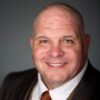
Leadership & Followership is based on the notion that leadership is relational, that people must accept the leadership of the person in charge in order for him or her to influence, to guide, to lead. The session focuses on leader-follower relationships—both healthy and unhealthy—and, using real-world examples, analyzes what characterizes good followers and good leaders and how leaders and followers aid and hinder one another efforts.
This session will involve lots of discussion and drawing on participant experience.
Learning Objectives:
• Improved understanding of the centrality of relationship to leadership
• Enhanced understanding of what a leader/follower relationship can look like
• How to improve leader/follower relations
Gregory Shea

True presence is a highly-sought after and crucially important skill for the modern executive. Successful leaders in every field have that rare combination of confidence, charisma, self-awareness and inspiration. Easily seen and difficult to describe, stage presence or leadership presence is an attribute that we all feel is something which would make us better leaders. It is the ability to authentically connect with and engage audiences. Presence is a skill that we need in one-on-one encounters as well as when presenting to 1000 people. True presence allows us to read the room and to lift audiences away from the many distractions that are a part of everyday life in order to inspire, persuade and build momentum toward a strong vision. It brings people from the ordinary into the extraordinary. While some might argue that presence is an innate quality, this workshop will prove otherwise as we demystify the building blocks of presence and train ourselves to strengthen our own engagement with audiences. By learning to be more “present,” participants will understand how to be more motivational as a leader, more convincing as a negotiator and more open and honest as a team member. This workshop develops and utilizes a practical toolkit for leaders to continue working on their presence and their ability to communicate their vision and their story long after the workshop has ended.
Learning Objectives:
Quinn Bauriedel

What is the most important thing for living a happier life, even in financial services? What about for building a higher-performing team?
Expanding on one of SII’s most popular sessions, this new deeper dive into happiness and team dynamics can improve your life both personally and professionally. Attendees will learn:
All attendees will receive free memberships to a special online site so you can continue applying what you learned after you leave Wharton and share it with your families and teams.
Andrew Bernstein

(Also offered Wednesday at 1:30pm)
The Negotiation Workshop is fun and very interactive. It will utilize simulations to highlight key concepts and skills. Participants will conduct mock negotiations and then discuss what occurred. The workshop is intended for those who would like to improve their negotiation skills as well as those who are already accomplished negotiators.
Learning Objectives:
Eric Max

7:15am – 8:15am
Breakfast will be served at all SII hotel properties.
8:45am – 10:15am
Everyone has something they want to change. Marketers want to change customers’ minds and leaders want to change organizations. Startups want to change industries and non-profits want to change the world. But change is hard. We push and push, but often nothing happens. Could there be a better way? The Catalyst: How to Change Anyone’s Mind introduces a revolutionary approach to change. Successful change isn’t about pushing harder or exerting more energy. It’s about removing barriers. Overcoming resistance by reducing friction and lowering the hurdles to action. Discover the five hidden factors that impede change, and how by mitigating them, we can all become catalysts.
Jonah Berger
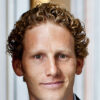
10:35am – 12:05pm
CFP®, CIMA®, CPWA®, CIMC®, and RMA℠ Eligible
Central banks have come to be regarded as the “only game in town” for economic policy-making. But what are these curious institutions, where did they come from, and where are they going? This session analyzes these and related issues by providing a brief history of central banking and focusing on the ways that central banks today and in the future will dominate the landscape for banking and finance the world over. The focus will be on the U.S. Federal Reserve System, the European Central Bank (and its predecessors), and the People’s Bank of China.
Peter Conti-Brown

CFP®, CIMA®, CPWA®, CIMC®, and RMA℠ Eligible
(This course will require a 30-minute webinar to be viewed prior to Institute Week.)
Ideal for: Participants who want to improve their appreciation of and insights regarding the current political economy of the Peoples Republic of China, and the relationship between that nation’s recent economic expansion and prospects for the future of the United States of America.
The rise of China since the 1990s has been the most significant economic event in the world in recent times. However, the actions of the Administration of President Trump since 2016, as well as his own frequent outbursts on the relationship of our nation with China, have created great uncertainty about the future—including in financial markets. Today we appear to be at a crossroads about how we will respond as a nation in the coming years to China’s political and economic evolution. This elective session will first briefly review the remarkable rise of the Chinese economy from the rise of Mao in the mid-20th Century into the current era of the early 21st Century. We will focus on the historical roots of that transformation, and how these have shaped the current attitudes and perspectives of the Chinese leadership towards economic priorities, growth, and relations with its off-shore business entities. We will then turn specific attention to the prospects for future political-economic relations between the PRC and the USA as the “American Century” winds down and an aggressive new American President with a stated nationalist agenda has taken the helm—while in China a transformative President appears determined to raise that country to global preeminence if not outright superiority over the US. Participants will be challenged to consider how the many benefits of “doing business with China” for American firms must be balanced against the ultimate ends and goals of that nation as they relate to the value proposition of the United States—which includes respect for democracy, free markets, a rules-based world order, human rights– and its own ambitions in the decades ahead.
Learning Objectives:
Paul Tiffany

CFP®, CIMA®, CPWA®, CIMC®, and RMA℠ Eligible
This session will focus on our latest market and economic perspectives on Emerging Markets. Following a year of weak and slowing activity in 2019, investors wonder if the softness will continue or if there is potential for a comeback in Emerging Markets. We believe there are green shoots.
The 2019 Emerging Market equity underperformance was primarily driven by slowing growth, trade tensions, and idiosyncratic geopolitical events that buffeted returns. Performance may gain momentum as these conditions unwind. We believe the macro environment will stay supportive of risk assets, central banks will have accommodative positions, and emerging equities remain poised for a comeback. Going forward, we expect more differentiation across countries as growth and earnings drive returns across equities, rates, and credit.
In our view, Emerging Markets remain a key driver of global growth over the longer term. Tremendous demographic growth, an expanding middle class, and productivity advances all provide secular tailwinds to Emerging Markets. Though there will be variation at the country, sector, and, company level, we continue to believe that exposure to the Emerging Markets across assets classes should be a critical part of investors’ strategic long term asset allocation.
Learning Objectives:
Candice Tse

CFP®, CIMA®, CPWA®, CIMC®, and RMA℠ Eligible
This year promises to bring many new emerging regulatory issues to financial services firms. A proactive approach to compliance in identifying and implementing sound business practices, policies and procedures to promote a good working relationship with industry regulators will be even more important in 2019. This course, which is intended for individuals with a basic understanding of the U.S. regulatory structure for financial institutions, will focus on pending and current rulemaking that will impact the financial services industry, examination priorities for 2019 and best practices for interacting with many types of regulators).
Learning Objectives:
Jesse Hill, Joan Schwartz


CFP®, CIMA®, CPWA®, CIMC®, and RMA℠ Eligible
Ideal for: Participants who want to understand why ETFs are displacing mutual funds, improve their understanding of the ETF due diligence process, and learn to evaluate passive investments. If you’ve ever wondered how to choose among seemingly identical products, worried about ETF trading, or scratched your head about tracking error, this is the class for you. Buy-side due diligence teams, risk managers, wealth managers, and active equity and fixed income managers can all benefit.
Exchange-traded funds have grown enormously over the past decades, capturing market share from mutual funds, hedge funds, and separately managed accounts. One out of every five dollars in publicly available equity funds is now in ETFs, up from one in eight just five years prior, and zero twenty-five years ago. The active-to-passive trend is even starker, with active management losing ground every year since 2014.
As investors embrace passive management and the exchange-traded fund structure, fiduciaries can find themselves facing new questions. Often, simple rules of thumb such as looking for the fund with the highest asset level, lowest expense ratio, or highest daily inflows can lead to costly mistakes.
This session will cover the fundamentals of ETF due diligence, with case studies, lively lectures, and Q&A. Topics will include in-kind creation/redemption, which is the key differentiator between ETFs and mutual funds and the driver behind ETF’s competitive advantage; holding cost and risk analysis; liquidity evaluation and trade analysis; and, most importantly, index construction as the most critical driver of long-term performance.
Learning Objectives:
Elisabeth Kashner

CFP®, CIMA®, CPWA®, CIMC®, and RMA℠ Eligible
Financial regulation in the United States has always been a complicated patchwork of functional divisions between federal agencies, state regulators, and discrete parts of the financial industry. Understanding how these regulators work together is still complicated, but it is something with which financial professionals have to grapple. This session will show you the rules of the road for the financial regulatory system we have so that you can maximize the amount of open water for your business and make sense of the new priorities of financial regulators.
David Zaring

CFP®, CIMA®, CPWA®, CIMC®, and RMA℠ Eligible
Review and discuss the basics of foreign exchange (FX) rate markets: terminology, institutional features, common contracts, and market size and structure. Introduce concepts of cross currency rates as effective exchange rates. Demonstrate the link between FX markets and global money markets. Discuss basics of hedging and speculating in the FX market.
Learning Objectives:
Gordon Bodnar

CFP®, CIMA®, CPWA®, CIMC®, and RMA℠ Eligible
Ideal for: Non-operations professionals in the securities industry.
This course provides a broad and basic perspective of brokerage operations covering Global Markets across a range of products, functions and services. Topics will include the life cycle of securities transactions from execution through clearance/settlement and custody, as well as critical client service and operations risk management functions. Operations will be discussed from both a macro industry perspective and the inner workings of individual broker/ dealers.
Learning Objectives:
Kristin Kennedy

CIMA®, CPWA®, CIMC®, and RMA℠ Eligible
In theory, retirement begins on the day an employee receives their last paycheck—that is also the day that they begin to looking at their investments differently. The paycheck is, in essence, an investment safety net and one that no longer exists for a retiree. Shifting demographics, elongated lifespans, increasing inflation expectations, the decline in pensions, and secular changes in the interest rate environment are just some of the issues forcing the financial services industry to redraw the playbook for retirement income. This session will explore the differences between the accumulation and distribution phases of the investing cycle. It will detail the history of retirement cash flow generation and introduce a new, more diversified approach using a wide array of investment solutions available in today’s marketplace. With more than $2.5 trillion in self-managed 401k assets preparing for rollover in the next decade, professional advice has never been more needed. For many, particularly the underfunded, it could be the difference between eating caviar or cat food in retirement.
Learning Objectives:
Bryan Piskorowski
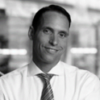
CIMA®, CPWA®, CIMC®, and RMA℠ Eligible
Did you ever wonder how the firm you work for makes money? Have you listened to your Chief Financial Officer talk about the quarterly earnings, and walked away scratching your head? This introductory session developed for those without a financial background takes a simplified look at where the money comes from and where it goes to determine the profit (loss) announced in that last quarterly report. Focusing on financial services firms, we will look at the businesses of our industry and how they drive the four core operating activities. In layman’s terms we will break down the income streams and expenses taking the jargon out of financial reporting. If you would like a simple explanation of “ratios” like EBITDA, EPS, ROI, RWC and buzz words like Tier 1 Capital, deferred tax assets and non-counterparty risk, then this is the session for you.
Following this session, you will be able to:
This way, the next time your firm reports earnings, you will be able to understand the rhetoric, the balance sheet and the income statement, making you a better-informed employee.
Gerald Schreck

CFP®, CIMA®, CPWA®, CIMC®, and RMA℠ Eligible
The equity markets play a central role in the U.S. economy, and as a result there is always considerable public debate about market structure reform. This session will focus on how the U.S. market structure operates, explore why changes are being discussed, and how this all connects to increasing investor confidence. The session will provide background on how, and why, the market structure evolved to what it is today, what were the intentions of the legislation and regulations that shaped it, and what were some important unintended consequences.
Learning Objectives:
Theodore R. Lazo, Larry Leibowitz
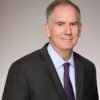

CLE® Eligible; CIMA®, CPWA®, CIMC®, and RMA℠ Eligible
This session will simulate a real securities arbitration. Participants will watch a condensed proceeding based on common investor disputes, with experienced trial attorneys playing the roles of Claimant’s and Respondents’ counsel. A discussion of case, and of best practices to prevent litigation and client disputes, will follow. Participants will receive a one-page background fact document prior to attending this session.
Learning Objectives:
Allison Patton, , Michael Ungar
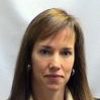

CFP®, CIMA®, CPWA®, CIMC®, and RMA℠ Eligible
Economies and markets globally are impacted by the policy actions of Central Banks, especially the US Federal Reserve (FED).
Central Banks such as the FED have a predominant influence on interest rates, which have major impacts on economies and financial markets. The “inverted yield curve” and the FED’s reaction to it in 2019 are prime examples of the interaction between monetary policy and economic forecasts. The FED has a dual mandate to maximize employment while also keeping inflation low and steady. The FED monitors key variables related both to the job market and to inflation. We will analyze different gauges on the Federal Reserve’s “job market dashboard” and its “inflation dashboard.” The U.S. now exceeds ‘full employment’ as commonly defined and measured by the official unemployment rate. However, other metrics may not indicate truly full employment. We will analyze various forms of underemployment. We will discuss the possibility that there is still slack in the labor market that could account for the relatively slow wage growth the US economy is still generating.
Our analysis of the “inflation dashboard” will show that the FED monitors a variety of metrics which are crucial for its decisions about interest rates. These decisions have a strong influence on financial markets. We will discuss the recent path and forecasts for inflation, in light of the FED’s targets.
Beyond the FED, we will analyze the policies and actions of other key Central Banks, including those which have adopted negative interest rates. By looking at various Central Banks, we can gain insight into the movements of exchange rates as well as of interest rates.
This session will engage participants by analyzing the current state and future prospects for monetary policy. This analysis will enable participants to explore the future of economies and financial markets.
Learning Objectives:
Jeffrey Rosensweig

CFP®, CIMA®, CPWA®, CIMC®, and RMA℠ Eligible
Ideal for: Customer-facing industry professionals or any participants interested in understanding regulatory controls designed to protect investors.
Whether you are a financial advisor or an individual investor, it is important to understand how regulations protect investors and contribute to the trust in and stability of our markets. This session provides a broad foundation of regulations that address current investor protection issues. It will be presented as an interactive jeopardy game, exploring five key categories:
Learning Objectives:
Kurt Wachholz

CFP®, CIMA®, CPWA®, CIMC®, and RMA℠ Eligible
With limited other resources, clients are turning to their financial professionals for advice on Social Security. Advisors who can provide education and guidance on Social Security as part of the retirement planning process are more likely than their peers to retain retiring clients, grow share of wallet and gain referrals.
Learning Objectives:
Robert Kron

12:30pm – 1:15pm
With the dawning of a new decade and the advancement of the fourth industrial revolution, the future of work is being redefined, bringing with it new skills and capabilities needed for a 21st century workforce. The question is are the new workers prepared to display those skills, leveraging diversity, inclusion and equity as a competitive advantage. Organizations like the National Association of Securities Professionals will be a great enabler to make a difference. We will discuss the attributes required to be successful in this new era.
Sponsored by Murphy & McGonigle
Ronald C. Parker
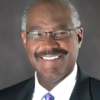
1:30pm – 3:00pm
Thriving at work, high life satisfaction, happiness and resilience all require the same capacity: the capacity to navigate difficult moments well. Our conversation considers research from the fields of Positive Psychology and Appreciative Inquiry, fields which examine who we are at our best as individuals, teams and organizations. We’ll explore tools and perspectives that enable us to handle inner conflict, difficult conversations and moments of extraordinary stress wisely. These are tools that bring mindful awareness to any one moment and change that moment into one of opportunity; opportunity in which we not only address the stressor directly, but leverage that very conflict to become more authentic, more rooted in our strengths and values, more clear about the road ahead and more of our better selves. In other words, better leaders. Attendees will leave with experience practicing mindful pausing, identifying one’s ideal self, and leveraging positive change in themselves and others in the most challenging moments.
Learning Objectives:
Maria Sirois

Session Goal: To lead in dynamic, complex environments, leaders need to understand who they are, and what values and convictions drive their thinking and behavior. In this session, participants learn that leadership is an identity rather than merely a position or role, a set of skills, or a list of “things that you do.” Participants better appreciate their own evolving perspective on leadership, and are able to see leadership and inspiration from both organizational and personal perspectives.
Learning Outcomes:
We’ll open the session with a discussion relating leadership and identity, “leader” as who we are AND what we do (not merely a role or skill set). We often find it easy to lead “from a distance,” by using an organizational lens to understand the change process, and the challenges associated with implementation. While an organizational perspective is useful and informative, the challenges associated with leadership are often connected to the identity, personality and style of the leader. Participants will be challenged to reflect on how their life experiences have influenced their values and leadership style.
Todd Henshaw

CFP® Eligible ; CIMA®, CPWA®, CIMC®, and RMA℠ Pending
Public policy always impacts economies and financial markets. Such impacts are particularly pronounced now. The uncertainty surrounding the upcoming election as well as trade, fiscal, geopolitical, and monetary policy is contributing to heightened market volatility.
The Tax Reform package was the major economic initiative of the Trump administration and Congress. We will analyze the economic and financial impacts. The tax cuts likely contributed to the “Trump bump” in economic growth and the stock market during 2019. However, the tax cuts are increasing the Federal Government deficit, which was already forecast to grow significantly. The extent of the impact is uncertain, so we will discuss possible scenarios. Deficits imply government borrowing, achieved by issuing more Treasury Securities. Thus, deficits add into a Gross Federal Debt that already exceeds $23 trillion. If the deficits increase as forecast over the next decade, will the US government debt become so large that people will not want to hold it? If so, bond prices would decline, market interest rates would rise, and the sustainability of the debt will become a crucial issue.
Further, government deficits can exacerbate trade deficits. This seems to be the case in the US now. These deficits have led President Trump to turn toward protectionist trade policy. Trump’s trade policies have risked trade wars, especially with China, resulted in a “new NAFTA,” and added uncertainty to the financial outlook. The impact on business and markets of new trade policies will be analyzed.
The US faces many geopolitical risks and international “hot spots” of potential conflict; thus, policy towards national security will be crucial. Impacts are likely to be felt during 2020 in the economy, in business opportunities, in financial markets, and in the election.
The ultimate goal of this elective is to engage SII participants in an exploration of the U.S. fiscal, trade, political, and financial future.
Learning Objectives:
Jeffrey Rosensweig

Perhaps the most important responsibility for any manager is to help their people grow and reach their potential. Coaching direct reports on a regular basis is a condition of employment at many companies for any manager.
Yet our research concludes that managers rarely coach their people, particularly in the rapid moving financial services industry. What makes this even more troubling is that most people crave feedback from their managers—even if it’s negative.
This session will introduce a specific coaching model and the skills required to make it work. Participants will learn how to plan, conduct and follow-up coaching sessions. They will learn how to collect data, how to position these sessions, how to provide balanced feedback, how to manage the inevitable push back and how to gain commitment.
Managers often say they don’t coach their people because they aren’t comfortable in this role. Too often they coach they way they parent or how they were coached in sports, dance or the arts. This session will explain how to be an effective coach in business situations, and the practice exercises will demonstrate how it is all applicable and manageable.
Learning Objectives:
Eric Baron

Why do certain products, services, and ideas catch on, and how can we use these insights to make our own stuff more successful? This session will reveal the secret science behind word-of-mouth and social transmission. Discover how six simple principles drive all sorts of things to become popular. If you’ve ever wondered why certain information gets shared, brands get more word of mouth, or ideas take off, this session explains why, and shows how to leverage these concepts to make your own products and ideas catch on.
Learning Objectives:
Jonah Berger

CFP®, CIMA®, CPWA®, CIMC®, and RMA℠ Eligible
Modern Portfolio Theory and the case it makes for diversification have long been foundations for investing. However, since the financial crisis, disparate asset class performances have brought investors to question the benefits of asset allocation. This session will break down the performance drivers in the current market cycle and lay out the global growth story, making the case for continued asset diversification. It will examine the issues currently facing globally allocated portfolios and survey several strategies and techniques investors can use to mitigate these problems. Topics will include strategic versus tactical allocation, active versus passive investing, and the power of rebalancing, among others. The goal of this elective is to give the participant a broader and deeper understanding of the forces affecting asset allocation portfolios in the 21st century and to make the case that diversification still works—that it’s not “different this time”.
Learning Objectives:
Bryan Piskorowski

In many industries today, and especially in finance, organizations operate in ecosystems made up of powerful and highly interconnected stakeholders. Companies that figure out how to manage this complexity will enjoy a powerful competitive advantage in finding and selecting innovations. Participants will be introduced to a tool-based ideation process that helps them think through ways of innovating their companies’ product or service offerings. The methodology allows managers to identify innovation growth opportunities and select insightfully among them, thus ensuring that the company is responsive not only to the pressing needs of the direct customers, but also to the needs and concerns of the other stakeholders in its ecosystem.
Martin Ihrig
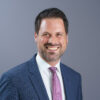
CIMA®, CPWA®, CIMC®, and RMA℠ Pending
This program addresses the major innovations that will impact not just the business world but the entire world in the next decade. These are not “what if” ideas, but trends, technologies and innovations that exist today that will have a direct impact on you, your firm and your clients. John created this session through his personal interactions with many of the world’s top thought leaders who are actually driving this change. Some of the topics include:
Learning Objectives:
The information delivered will greatly challenge the audience to examine their businesses today on how they will have to be positioned in the coming years to continue to be successful in the industry.
John Spence

CFP®, CIMA®, CPWA®, CIMC®, and RMA℠ Eligible
The 21st century has and will continue to see a revolution in the way we think about money. In this session, financial historian and legal scholar Peter Conti-Brown will provide an overview of what money is, where it comes from, and where it is going. He will focus on the costs associated with large-bill currency; what central banks make of Bitcoin and other kinds of decentralized, private currencies; what new regulatory approaches to fintech will mean; and what entrepreneurial options you should watch in 2020 and beyond.
Peter Conti-Brown

CIMA®, CPWA®, CIMC®, and RMA℠ Eligible
(Previously titled Improving Decision-Making)
Why do we fall prey to the “art of the con”? Why do some individuals gain support for their ideas in meetings, while others seemingly languish? At the core of any organization’s performance are the decisions that leaders make…those financial, strategic, human resource, marketing and leadership decisions that in the end determine an organization’s performance. Thus, understanding how to improve decision-making is a truly fundamental leadership requirement. In this session, we will discuss the decision “traps” most commonly observed. These biases are unfortunately widespread because they are in large part determined by how the human brain operates. Drawing on recent research, this session will expose participants to decision biases through short exercises and offer ways to alleviate them. Issues to be covered: outlining the components of great “cons”; establishing “the problem” to be solved; making a decision; and, building trust.
Learning Objectives:
Jim Austin

CIMA®, CPWA®, CIMC®, and RMA℠ Eligible
(Also offered on Wednesday at 3:20pm – This class will require pre-work to be completed prior to Institute Week.)
The Herrmann Brain Dominance Instrument (HBDI™) is a 120-question diagnostic survey, the answers to which indicate an individual’s thinking style preferences. Our minds have preferred modes of operating that impact how we see the world, how we interpret what we see, and how we communicate with others who are also operating from their own preferred modes of thinking and speaking. Thinking preferences influence communication, decision-making, problem solving, and management styles. By understanding their thinking style preferences, participants will gain a new perspective of themselves and the people with whom they interact each day. In this HBDI session, a series of interactive exercises is used to get participants comfortable with the model, conversant about each of the 4 styles, and aware of the dangers of over-simplifying the process. This session offers a wide range of exercises and will choose a combination of exercises specific to each group’s needs. Participants will also explore when thinking styles are problematic. Through development of self-inventory, participants will learn about their own hot buttons and the hot buttons of others and develop strategies for addressing these situations in a constructive manner. During the program we also address the effects of individual and team HBDI data on some main leadership issues of our time, like enhancing our agility and creative thinking in times of fast pace change and ambiguity. This course will require a 120-question survey to be completed prior to the participants’ arrival.
Learning Objectives:
Chuck McVinney
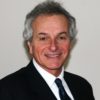
Have you ever been on a group project in which everyone worked hard but no one got along? How about a group in which everyone got along but no one worked hard? How do you turn a group into a team with positive group dynamics and high productivity? This session will help you identify the key factors that can help turn a group into a team. In addition, by participating in a survival simulation, you create a live “case study” and opportunity to reflect on the ways in which you typically contribute to and participate in group work. By the end of the session, you will have a better understanding of how you work in a group and make a group work.
Learning Objectives:
Anne Greenhalgh

(Also offered Tuesday at 3:20pm)
The Negotiation Workshop is fun and very interactive. It will utilize simulations to highlight key concepts and skills. Participants will conduct mock negotiations and then discuss what occurred. The workshop is intended for those who would like to improve their negotiation skills as well as those who are already accomplished negotiators.
Learning Objectives:
Eric Max

CIMA®, CPWA®, CIMC®, and RMA℠ Eligible
Today’s business environment is no longer described as having an “ebb and flow”, but rather a permanent “whitewater” condition. This increased speed of change has caused a movement from discrete-event strategic planning to more dynamic planning – the quarterly strategy “refresh”, for example. However, many organizations struggle with the ability to stay nimble to respond to rapid market changes because of a variety of factors. This session explores the common barriers to agility, discusses ways to create a culture of productive paranoia, and describes three concrete actions in achieving strategic agility.
Learning Objectives:
Kathy Pearson

This session focuses on three cases in which the presenter led collaborative efforts to build the visions needed to energize and guide needed change in three very different and highly complex organizations. General Rapp was the commander (CEO/President) of each organization – all of whom knew he would only be with them for a finite period of time and thus they could hold their breath and outwait him. The first was a 5200-strong Corps of Engineers division that controlled all waterways, flood control, hydropower, environmental restoration, and regulation from St. Louis north and west to the Puget Sound (14 US states.) The second was the 17500-strong organization he led in Afghanistan where the U.S. needed to rapidly change the mindset from surge to drawdown and put all logistics and transportation infrastructure in place to meet the President’s guidance. The third was the 1100-strong US Army War College where he needed to change the culture of an academic institution. Most corporate and public entity visions he has seen are palliatives that say little and drive less. General Rapp found that, if well-constructed, attuned to the work force, and informing a strategic plan, a vision can be extremely powerful in creating organizational change. Discussing those cases and the resulting lessons are the focus of the session.
William Rapp
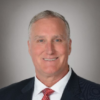
CFP®, CIMA®, CPWA®, CIMC®, and RMA℠ Eligible
This course will focus on the increasing power of women in the global economy and how we can close the gender gap. Research has demonstrated that women continue to be a powerful economic force and by investing in them, we better families, communities, and society. Regardless of where you invest in women, one finding is consistent, that when you invest in women, we create a multiplier effect that impacts markets around the world.
This seminar will assess the gender gaps that exist globally. In particular, we will highlight the gender gaps in Japan, the US and the Emerging Markets and examine the gaps across four major areas:
In this session, we will explore how bringing more women into the labor force and providing female business owners with better access to capital, can substantially boost GDP growth and per capita income. Additionally, our research has also shown that as economic opportunities for women improve, countries can reap the benefit of a ‘double dividend’ as women are more likely to use their earnings and increased bargaining power to buy goods and services that improve the family’s welfare. This should create a virtuous cycle as female spending supports the development of human capital, which in turn will fuel economic growth in the years ahead. At the same time, economic growth should continue to bolster gender and income equality which is critical to sustainable development.
Learning Objectives:
Candice Tse

1:30pm – 4:50pm
Recent academic work on the science of innovation and creativity has revealed a new, evidence-based approach to coming up with new ideas and solving problems – but it is one that is not widely known outside of academia! In this session, we will first discuss these new approaches to innovating, including a number of simple tips and common mistakes. Then, in the second half of the session, you will play the Breakthrough Game, which allows you to apply the tools you learned to use in a fun and engaging way. Playing the Breakthrough Game, participants not only solve one particular challenge as a team but also, crucially, learn how to drive the innovation process in the future. You will come out of this session with short-term takeaways that will make your future idea generation sessions more productive, an actionable idea that you can pursue, and a general framework that you can use to solve problems and search for new opportunities.
Ethan Mollick

The ongoing digital transformation drastically decreases the lifecycle of new products and business models and thus demands continuous innovation. To make the drive to innovate self-sustainable, companies strive to embed it in their corporate culture. In this session, we will define the key characteristics of a culture of innovation and learn about agile as a set of general principles and concrete instruments for fostering such a culture. We will review case studies from the IT, finance, and other industries. The participants will practice the skills necessary for successfully creating and navigating an innovative agile organization.
Valery Yakubovich

Design Thinking is quickly becoming a fundamental tool for innovation. It is a creative problem-solving methodology that can help business leaders find new, creative solutions to increasingly complex global challenges. This session will introduce the basic elements of design thinking, including empathy, ideation, and iteration and provide examples of how to use those techniques to develop new products and identify new business opportunities. Participants will learn a human-centered approach for generating and evaluating new ideas and will identify opportunities to apply that process in their daily work.
Learning Objectives:
Through interactive experiences in the Design Thinking course, attendees will:
Sarah Rottenberg

(This class will require pre-work to be completed prior to Institute Week.)
Over 70% of history’s most transformative innovation came from employees, not entrepreneurs. Employees are the number one source of innovative growth options and the only remaining source of true competitive advantage. Arming them with the skills and tools necessary to innovate on a continual basis is of paramount importance to organizational survival.
Discover how to overcome the key barriers and activate essential drivers of innovation inside large companies. Based on three years of research involving more than 150 interviews with internal innovators, experts, and CEOs, and Kaihan’s analysis of the most transformative innovations of the last three decades, this workshop is a must for leaders and employees that recognize the need for innovation and want to increase the rate at which they are able to experiment with and land fresh ideas in their company.
This workshop will lay out a set of practical tools and frameworks for navigating the innovation journey and activating innovation from within any established organization, based on Dr. Kaihan Krippendorff’s next book, Innovate from Within: Change the World without Quitting your Job (Columbia University Press, 2019).
This highly interactive program is for individuals and teams at all levels that are committed to pursuing innovation and growth and want to learn a systematic framework to increase their success rate.
You’ll get exclusive access Outthinker research of internal innovators and the impact of Intrapreneurial Intensity. You will learn a repeatable approach (The IN–OVATE Framework) to landing innovative ideas in a company and a toolset that will enable you to identify the most relevant barriers that you need to focus on now to advance an idea in an organization.
The IN-OVATE Framework
Intent – Which of three beliefs are holding you or your team back from pursuing innovation?
Need – How to accurately identify which types of innovations the market needs and your organization will embrace?
Options – How to trigger more disruptive thinking as you generate innovative solutions?
Value blockers – How to predict where your current business model will conflict with your idea to reduce the rejection rate of your idea by your organization?
Act – Why writing a business plan puts your idea at risk and how to embrace an agile, act-learn-build approach.
Team – Can you assemble a cross-functional team that has the right attributes needed to ramp up the innovation up quickly?
Environment– Can you manage the four macro organizational environmental factors to create an island of freedom?
This is not just theory. You will immediately practice the tools and approach on business cases or your own business challenge. This will lay a foundation for you to act innovatively and entrepreneurially inside of any organization. It will boost your confidence and reinforce the idea that innovation from within is possible, attainable, and ultimately actionable.
Here’s what you’ll learn:
The proven characteristics of effective internal innovators
The seven most common barriers to internal innovation
How to identify islands of freedom with your organization
The three barriers that stop employees from attempting innovative behavior
How to predict and pre-empt business model conflict
The proven organizational drivers that enhance or hinder internal innovation
***This course requires approximately 20 minutes of pre-reading of a business case.
Kaihan Krippendorff

Emotional Intelligence (EI) is a critical component for effective leadership and a significant contributor to excelling in the workplace. The good news is, regardless of one’s starting point, we can improve EI skills and abilities by thinking intelligently about emotions and using emotions to better think intelligently. To this end, using exercises and clips, participants engage in learning, practicing, and improving each of the EI components, with the goal of better understanding how to improve reading, engaging and leading oneself and others for the long term.
Learning Objectives:
Dafna Eylon

(This class will require pre-work to be completed prior to the participants’ arrival.)
This workshop will help strengthen your influence and persuasion skills. You need these skills to win support for important initiatives, achieve organizational alignment, and implement strategies. Through a series of interactive discussions and role-plays, you will answer four key questions in this workshop: What are the steps that led to buy-in? What is your communication style and how do you use to engage stakeholders? How do you make your ideas simple and compelling? How do you generate lasting commitment? The workshop content is drawn from the book The Art of Woo: Using Strategic Persuasion to Sell Your Ideas (Portfolio/Penguin), co-authored by G. Richard Shell and Mario Moussa.
Learning Objectives:
Participants will be asked to complete a survey and to read a chapter of “The Art of Woo” prior to attending this session.
Mario Moussa

3:20pm – 4:50pm
CIMA®, CPWA®, CIMC®, and RMA℠ Eligible
(Previously titled Collaboration Skills Development)
In this experiential session, participants explore behaviors that improve collaborative relationships. The session introduces practical, applicable skills for increasing the ability to effectively communicate with others — to hear and be heard. The atmosphere of the session is lighthearted and fun, utilizing a variety of activities, including exercises based in improvisational theater training. No one is singled out — all exercises are performed in large or small groups. The facilitator creates a comfortable atmosphere in which all participants are supported and encouraged. Every exercise is debriefed to maximize its application to the participants’ unique business-place needs. The result is a positive transformation of the participants’ communication skill-set.
Learning Objectives:
Bobbi Block

This session presents a novel approach to thinking about contemporary leadership challenges. The early years of the American Revolution present a spectacularly rich tapestry of leadership challenges and issues that inform today’s leaders. By anchoring the leadership lessons in historical vignettes, re-examining several myths, and connecting leader challenges to today, the session helps make learning leadership “sticky,” memorable, and useful to modern leaders and managers. As Mark Twain is attributed to have written, “History doesn’t repeat itself, but it often rhymes.” Participants in this session will be expected to do select readings and “play” key Revolutionary War leaders in class discussion about the contemporary leadership lessons gleaned from important decisions and events. The presenter is a retired Army major general who is now resident faculty at Harvard Kennedy School.
William Rapp

Research from Google’s best-performing teams suggests that among many factors that contribute to the health of a team, the most important lever is the experience of “psychological safety” on the team. Drawing upon current research– from Google, MIT and other organizations — we will explore what psychological safety means for employees, why it’s so important, and what you, as leaders can do to create the conditions for it on your teams.
Though we may think we are creating the conditions for collaboration to occur, the truth is that, without awareness, we may inadvertently undermining the experience of safety team members have of you, and of the team. What’s at stake is a more collaborative team environment, as well as greater engagement and aliveness for all.
Learning Objectives:
Yael C. Sivi

One of the most requisite skills is the one for which we receive the least amount of training. Managers loose equity value for their firms and weaken public viability because they lack the communication skills to engender confidence and trust. This lack of speaking ability also extends to our relationships with colleagues at work and at home. Seventy-five percent of all people have a fear of speaking in public that can even affect how they make a productive sales call on the phone. Poor communication skills can also inhibit job advancement.
Learning Objectives:
James Rosebush
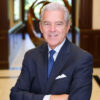
High performance requires effective execution and, for many organizations, change management. Unfortunately, major change efforts have a dismal track record. In multiple studies, highlighting the experiences of hundreds of companies initiating large-scale changes, the overwhelming results are poor. For example:
As the Harvard Business Review’s editor articulated so well in discussing why so many transformation efforts fail:
“…no business survives over the long term if it can’t reinvent itself. But human nature being what it is, fundamental change is often resisted mightily by the people it most affects: those in the trenches of the business. Thus, leading change is both absolutely essential and incredibly difficult” (Kotter 2007).
Learning Objectives:
Jim Austin

CFP®, CIMA®, CPWA®, CIMC®, and RMA℠ Eligible
Most financial professionals recognize that asset allocation, long a predicate of portfolio construction, dynamics, implementation, monitoring, and rebalancing, is a fundamental determinant of investment risk and return. However, many asset classes are highly correlated and respond to common sources of risk, return, correlation and other characteristics known as investment factors. Long understood as comprising the building blocks of investment performance in academia and the buy-side, factor-based investing is now becoming democratized and increasingly present and available in broader circles. This session will define factor-based investing, present evidence on the existence of factors in returns, and how factors, factor betas, and factor premia may be use to create portfolios and to assess investment performance. Covered will also be how factor-based investing relates to traditional active management, the “new” definitions of alpha and beta, implications for multi-asset class investing, the advent of smart-beta strategies as well as their implications for investing with alternatives.
Learning Objectives:
Christopher Geczy

CFP®, CIMA®, CPWA®, CIMC®, and RMA℠ Eligible
This course will examine the overall structure of global capital markets. It will compare USA equity performance with Developed Market equity and Emerging Market equity and address different methods to invest such as ADRs, and ETFs. It will also explore return characteristics of different asset classes in the global bond markets and discuss the impact of currency risk on foreign investments.
Learning Objectives:
Gordon Bodnar

CFP®, CIMA®, CPWA®, CIMC®, and RMA℠ Eligible
Taking a company public is not for the faint-hearted. Investors must be cajoled, regulatory oversight is intense, and the fees paid to investment banks can be enormous. This session will walk you through the going public process, focusing on the initial public offering, the restrictions on marketing the offering, and the ways the SEC is trying to make a dauntingly difficult process more friendly to firms. In addition, comparisons to direct listings and initial coin offerings will be made.
David Zaring

How do you see your organization? As machine, organism, brain, culture, politics, psychic prison, flux and transformation, or domination? Building on the work of organizational theorist Gareth Morgan, this session highlights eight metaphors or ways of viewing organizations. By providing a way of seeing that casts certain perspectives into the light and forces others into the shadow, metaphor emerges as a valuable tool for learning about organizations, their values and vulnerabilities. This session will give you an opportunity to explore organizational metaphors through the use of video clips, to draft and consider short case studies about telling moments in your organization, and work in pairs or small groups to craft recommendations that would build on organizational strengths and minimize weaknesses.
Learning Objectives:
Anne Greenhalgh

CIMA®, CPWA®, CIMC®, and RMA℠ Eligible
(Also offered on Wednesday at 1:30pm – This class will require pre-work to be completed prior to Institute Week.)
The Herrmann Brain Dominance Instrument (HBDI™) is a 120-question diagnostic survey, the answers to which indicate an individual’s thinking style preferences. Our minds have preferred modes of operating that impact how we see the world, how we interpret what we see, and how we communicate with others who are also operating from their own preferred modes of thinking and speaking. Thinking preferences influence communication, decision-making, problem solving, and management styles. By understanding their thinking style preferences, participants will gain a new perspective of themselves and the people with whom they interact each day. In this HBDI session, a series of interactive exercises is used to get participants comfortable with the model, conversant about each of the 4 styles, and aware of the dangers of over-simplifying the process. This session offers a wide range of exercises and will choose a combination of exercises specific to each group’s needs. Participants will also explore when thinking styles are problematic. Through development of self-inventory, participants will learn about their own hot buttons and the hot buttons of others and develop strategies for addressing these situations in a constructive manner. During the program we also address the effects of individual and team HBDI data on some main leadership issues of our time, like enhancing our agility and creative thinking in times of fast pace change and ambiguity. This course will require a 120-question survey to be completed prior to the participants’ arrival.
Learning Objectives:
Chuck McVinney

Ever wish you could be more influential? Be better at motivating yourself and others? Make smarter decisions and shape group opinion? This talk will show you how. Wharton professor Jonah Berger will share insights from his new bestseller, Invisible Influence. Influence is a powerful tool, but to harness that power, we have to understand how it works. You’ll learn why others make us faster runner but worse parallel parkers, why elite athletes tend to have older siblings, and what Goldilocks can teach us about launching successful products and ideas. You’ll never look at your own behavior –or the behavior of others—the same way again.
Jonah Berger

Participants will learn how to conduct an effective After Action Review and will participate in the “Crossing the River” exercise, a practical application of leadership, innovation and strategy in a challenging team environment. Participants will learn a cutting-edge technique called the “After Action Review.” The After Action Review (AAR) is used by many organizations, including the U.S Army, Navy Seals, Police and Fire Departments, surgical and trauma teams, and more recently, corporations to create a learning culture and focus on continuous improvement and sharing best practices across teams and organizations. Leaders can leverage the AAR to implement and reinforce change efforts, improve process execution, shape culture and influence employees to learn from past performance.
Learning Objectives:
Todd Henshaw

CFP® Eligible
The M&A landscape has undergone significant changes in the past decade. In an active, discussion-based format, participants will analyze how and why the M&A process has transformed over the past several years, and what we can expect to see going forward. Participants will leave this session with a deeper understanding of the distinction between effective and ineffective M&A strategies, as well as a set of tools and techniques that will help them outperform their competitors in pursuing and implementing value-creating deals.
Emilie Feldman

| P Purpose |
| E Experiential Frames |
| R Range of Options |
| C Contrary Views |
| E External Future Forces |
| P Productive Paranoia |
| T Trust |
| I Internal Culture |
| V Vigilance |
| E Experimentation |
Effective leaders recognize they must carefully manage both the external and internal environment. They inspire, provide clarity of purpose, seek diversity of thought and contrary views, and build a culture of trust. Leaders also develop a keen awareness of external forces and turn threats into opportunities by building an organizational capability of adaptability. In short, leaders build a PERCEPTIVE organization that is poised to achieve and maintain sustainable positive results.
After the session participants will be able to:
Kathy Pearson

Everyone in strategy is saying that the key to growth, even just survival, is via continuous and rapid innovation. But the real key to growth via profitable innovation is the strategic development and management of your knowledge: the insights of your employees, your technology, your core competences, and your intellectual property. This session will provide you with the foundation from which to prosper in this, the knowledge age. It will give you specific tools and frameworks to map your critical knowledge, design a program to strategically develop your knowledge, and then exploit it to successfully grow your organization.
Learning Objectives:
Martin Ihrig

(Previously titled Strategies for Success)
Nearly every businessperson agrees that to have a successful company you need a good strategy, yet few people create a “Success Strategy” for their own lives. During this session attendees will complete several personal exercises to help them gain clarity on what they must do to create a more happy, balanced, successful life and career. This program is shared with senior executives at major organizations around the world and more than 90 colleges and universities in America and beyond.
Learning Objectives:
John Spence

Gallup’s Strengths-Based Approach to Leadership will offer insights into how you can lead your people to achieve high performance and exceed their goals. The foundation of a Strengths-Based Approach is understanding your strengths as leader, which you’ll experience through the Gallup CliftonStrengths Finder assessment – taken prior to the session and with results available to you upon completion of the assessment. With your unique Strengths as a guide, the session will empower you to build on what you do great today – your strengths – and apply new ways of leading and managing your teams. You’ll leave the session with an understanding of how you can leverage and apply your Strengths every day.
Jeremy Pietrocini

7:15am – 8:15am
Breakfast will be served at all SII hotel properties.
8:45am – 10:15am
Many organizations function in the same way they have for decades, expecting that the next generation of workers and clients will simply accept long-standing corporate values and norms. While it may be tempting to think “this is just the way we do things around here”, such a mindset lacks the imagination needed to create an organizational culture where the youngest generation of workers will wish to contribute their best—and where clients across generations will be engaged. In this presentation, we will discuss the values and worldviews members of different generations bring to the workplace and why. We will discuss the elements of a collaborative environment that engages staff across generations, and we will explore how you, as leaders, can help co-create an organization, and a team culture, that will more effectively engage contributors, leaders, as well as clients.
Learning Objectives:
Yael C. Sivi

10:35am – 12:05pm
CFP®, CIMA®, CPWA®, CIMC®, and RMA℠ Eligible
This session will explain the long-term risks and returns of the bond and stock markets, market valuations, risk return tradeoffs, and interest rates.
Learning Objectives:
Jeremy Siegel

12:30pm – 1:15pm
2019 has presented significant regulatory developments under U.S. tax, anti-money laundering, securities and commodities laws with regard to blockchain technology and its various applications, leading to compliance challenges for early adopters. Banks, brokers, hedge funds and investors need to adapt to these developments. These various regulatory issues will be discussed in the context of such compliance challenges as well as potential information reporting risks.
Sponsored by Wolters Kluwer
Stevie D. Conlon

During this lunch lecture, Todd Henshaw will lead a discussion about how leaders develop at work and how people can develop themselves for leadership in a dynamic world.
Todd Henshaw

This lunch lecture will feature Maura Cunningham, founder and CEO of Rock The Street, Wall Street — a nonprofit financial literacy program for high school girls designed to spark their interest in finance careers. The program is led entirely by female finance professionals who serve as classroom-based instructors and mentors. It is currently in 28 high schools across 15 U.S. cities, and expanding rapidly. Session attendees will learn more about why the program is resonating so strongly with schools and the financial community, how it works, and its impact.
Sponsored by TD Ameritrade
Maura K. Cunningham

1:30pm – 3:30pm
The MicroInequities: Managing Unconscious Bias™ program focuses entirely on actionable solutions to actively manage unconscious bias in the workplace—actions that result in measurable behavior change. It provides the techniques and tools that make people skilled at driving change—not just being aware.
Being smarter about Unconscious Bias isn’t good enough—People must become motivated and skilled. Participants leave the session with the ability to immediately put what they learned into action to improve the quality of their own performance and enhance the ways others can be motivated to perform.
Learning Objectives:
Stephen Young
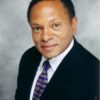
7:00pm – 9:00pm
Sponsored by Broadridge Financial Solutions, Inc.
Join fellow SII 2020 participants for a night of networking and fun at the National Constitution Center. Dinner and drinks will be served.
Featured Exhibit: Civil War & Reconstruction: The Battle for Freedom and Equality
7:15am – 8:15am
Breakfast will be served at all SII hotel properties.
8:45am – 10:00am
CFP®, CIMA®, CPWA®, CIMC®, and RMA℠ Eligible
The 2020 election is poised to mark an inflection point in our country’s future. The parties offer starkly different views on issues that will define American policy for years to come. The economy is paramount, but many of the country’s most contentious issues will be on the table, including trade, healthcare, taxation, fiscal policy, foreign relations, infrastructure, immigration, individual rights, and others.
In addition to these substantive issues, the election could act as a referendum on the incumbent’s personality and performance. The House impeachment inquiry only adds to that dynamic.
Although the election run-up will overhang the upcoming year’s events, Washington still must address the country’s business. Congress will seek to fund the federal agencies; continue oversight of companies in the technology, financial services, and other sectors; and pass legislation expanding the ability of workers to save for retirement. At the same time, the president will continue to pursue a trade policy of imposing tariffs and negotiating favorable trade agreements.
Jeff Bush’s 2020 presentation addresses all of these issues. He shares his insights on the upcoming election, from the Democratic primaries and nomination through the election of the president, House, and Senate in November. His discussion provides a unique analysis of the factors likely to influence the result and the markets’ reaction. His presentation also delves into the market effects of the House impeachment inquiry. Finally, he analyzes and predicts the outcomes and consequences of substantive matters – such as trade – that Congress and the president are likely to undertake in the coming year.
In addition to these insights, his presentation provides strategies that investors and financial advisors can consider to take advantage of (or protect against) market effects and volatility arising from Washington initiatives and the road to the election, as well as specific strategies for investment, wealth transfer, and retirement planning.
Jeff Bush

10:00am – 11:00am
In this conversation, Philip will explore the different between Talent and Gift and how this affects our ability to impact the world. He will help the audience understand, uncover and unleash their gift on the world.
Philip McKernan
